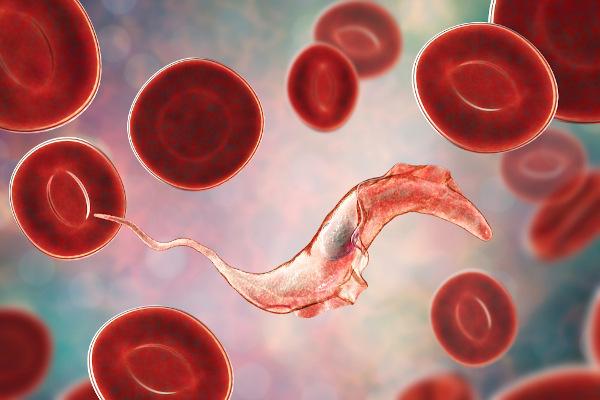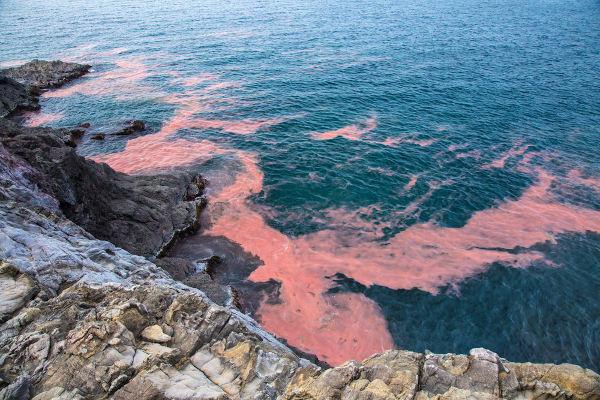O Protist or Protoctist kingdom it is a realm where organisms are grouped eukaryotes that do not have the necessary characteristics to be classified in the Plantae, Animalia or Fungi kingdoms. In this group we have, therefore, a wide variety of organisms, including, for example, unicellular and multicellular beings, autotrophic and heterotrophic.
In view of the most current classification systems, the Protist kingdom is no longer considered, since their representatives are often more related to plants, fungi or animals than to other protists. The term protist, however, is still used today to refer to eukaryotic organisms that are not plants, fungi, or animals.
Read too: three domains — the division of living beings into three groups

General characteristics of protists
All protists have in common the fact that they are eukaryotic organisms, that is, they have cells with a defined nucleus and membranous organelles. Due to the wide variety of organisms included in this group, other general characteristics are difficult to determine. Below are some characteristics observed in protist organisms.
- Most protists are unicellular, however there are multicellular and also colonial species.
- Some protists are autotrophic, but there are also species heterotrophic. It is worth noting that some protists are able to combine the two forms of nutrition, being called, in these cases, organisms mixotrophics.
- In some species, it is observed sexual reproduction, while in others the reproduction is asexual.
- most protistslives in aquatic environments, however, some representatives can live in the soil and even within other organisms, as is the case with some disease-causing protozoa.
Protist representatives
Protist representatives are usually divided into two main groups:protozoa and seaweed. Protozoa are eukaryotic organisms that exhibit heterotrophic nutrition. Algae, in turn, have autotrophic nutrition. It is noteworthy that currently many biologists classify green algae, together with bryophytes and vascular plants, in a group called green plants or viridophytes.
Protozoa
Protozoa, as mentioned above, are protists who are not capable of producing their own food, that is, they have heterotrophic nutrition. There are free-living protozoa and also parasitic organisms that can even cause diseases in humans.
It is traditional to divide protozoa on the basis of their way of locomotion. This division, however, has no taxonomic value. It is noteworthy that the locomotor structures, in addition to promoting the locomotion of protozoa, are used to obtain food. See below the classification of these organisms according to the form of locomotion.

- Sporozoan protozoa: they do not have a locomotor structure. As an example of sporozoans, we can mention the Plasmodium and Toxoplasma gondii, cause, respectively, of malaria and toxoplasmosis.
- Protozoa with pseudopods: they move through pseudopods, which are cytoplasmic extensions. As an example, we can mention the amoebas.
- Ciliated Protozoa: they move around by batting their eyelashes. As an example of a ciliated protozoan, we can mention the Paramecium.
- Flagellated Protozoa: present as locomotor structure the flagella. As an example, we can mention the trypanosoma cruzi, cause of Chagas disease.
Read too: Malaria - a disease caused by a protozoan that is a serious public health problem
Algae
Algae are aquatic organisms that stand out for their autotrophic nutrition. They can be unicellular or multicellular — in the latter case, they do not show tissue differentiation. They are found in both fresh and salt water, playing in these places an ecological role similar to that performed by plants in the terrestrial environment, constituting the basis of food chain (producing bodies).
Microscopic algae make up the so-calledphytoplankton, which stands out for the large amount of oxygen produced. Many algae still have economic value, being used in food and also in industry for the manufacture of different items, such as hygiene and beauty products.
→ Diatoms (chrysophyceous)
Diatoms are unicellular or colonial algae that present great abundance in oceans, being recognized about 10,000 to 12,000 species. It is worth noting that there are also freshwater species. As a striking feature of these organisms, we can mention the fact that they have a cell wall consisting of two valves, which fit together like a Petri dish. These walls are called frustulas and have silica in their composition.

→ Euglenoids
At euglenoid algae they are flagellated and inhabit mainly fresh water. Most are unicellular, with the exception of the genus Colacium, which is colonial. There are about 800 to 1,000 species, some of which have myxotrophic nutrition, performing photosynthesis in the presence of light and heterotrophic nutrition in the absence of this factor.
→ Golden algae
the golden algae have carotenoids (fucoxanthin), which are responsible for its typical coloration. In general, they have two scourges. Most golden algae are single-celled, but some are colonial. They present about 1,000 distinct species, which are predominantly freshwater.
→ Brown algae (feophyceous)
The brown algae are multicellular, presenting a simple and undifferentiated vegetative body (stalk). Due to the presence of carotenoids (fucoxanthin), they have a brownish color. There are about 1,500 species, and almost all representatives are marine. They vary in size: some are very small, but others can reach meters in length — the kelps, for example, can reach more than 30 meters in length. They have economic importance, being used in food.
→ Red algae
They are predominantly marine and have few unicellular representatives. The characteristic color of these algae is due to the presence of phycobilins, which mask the color of the algae. chlorophyll. About 6,000 species of red algae are recognized.

→ Dinoflagellates (pyrrophytes)
You dinoflagellates, mostly they are organisms unicellular with two flagella; others are immobile but produce flagellated reproductive cells. It is possible to observe in dinoflagellates the presence of a flagellum located in a furrow, as if it were a belt around the alga, and another flagellum in a furrow perpendicular to this. These two flagella, as they move, cause the dinoflagellate to rotate. Many species are marine, but there are also freshwater species. There are about 4000 species of dinoflagellates.

Dinoflagellates, when they reproduce exaggeratedly, cause a phenomenon known as Red tide. Due to the presence of carotenoid pigments in this type of alga, their excessive proliferation causes the water takes on a reddish color. It is worth noting that the red tide problem is not just the change in the color of the water. Due to the production of toxins by certain species, the increase in dinoflagellates can cause the death of animals that live in the area, such as fish. In addition to the red tide, many dinoflagellates are known for their ability. bioluminescent.
By Vanessa Sardinha dos Santos
Biology teacher
